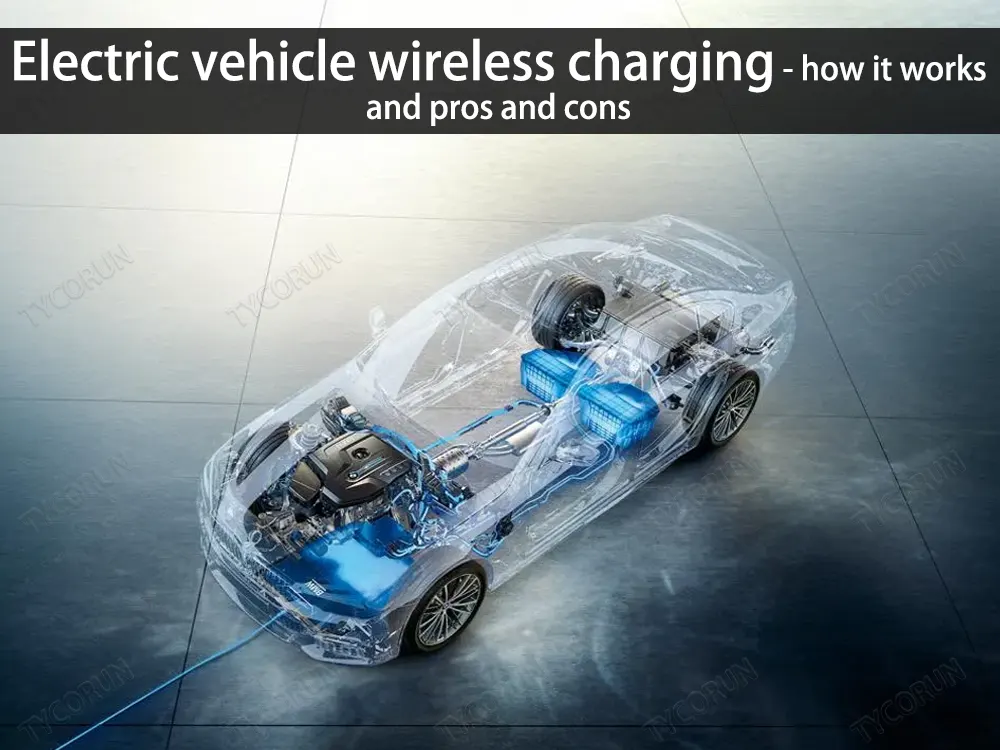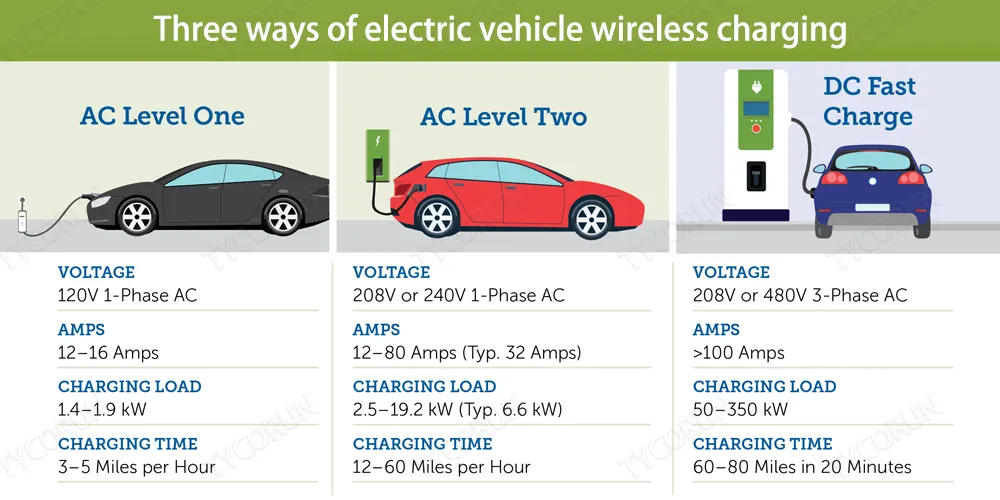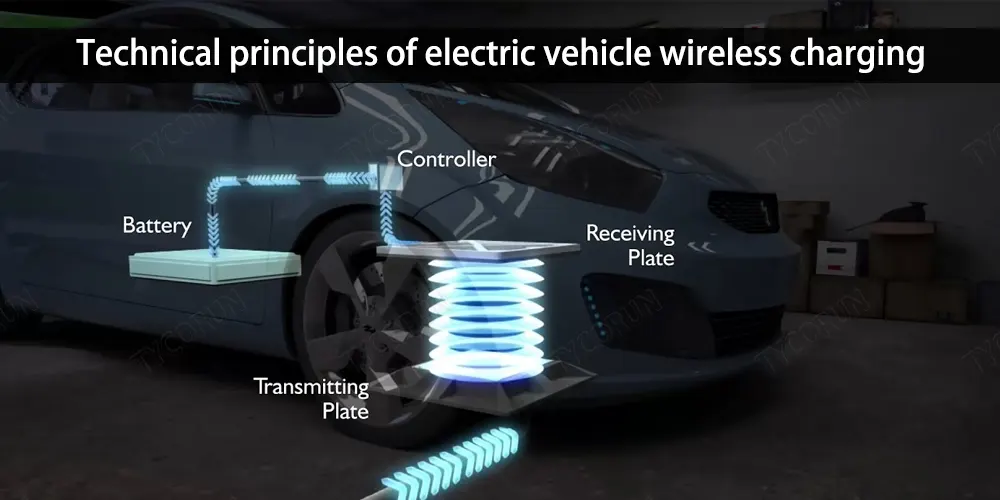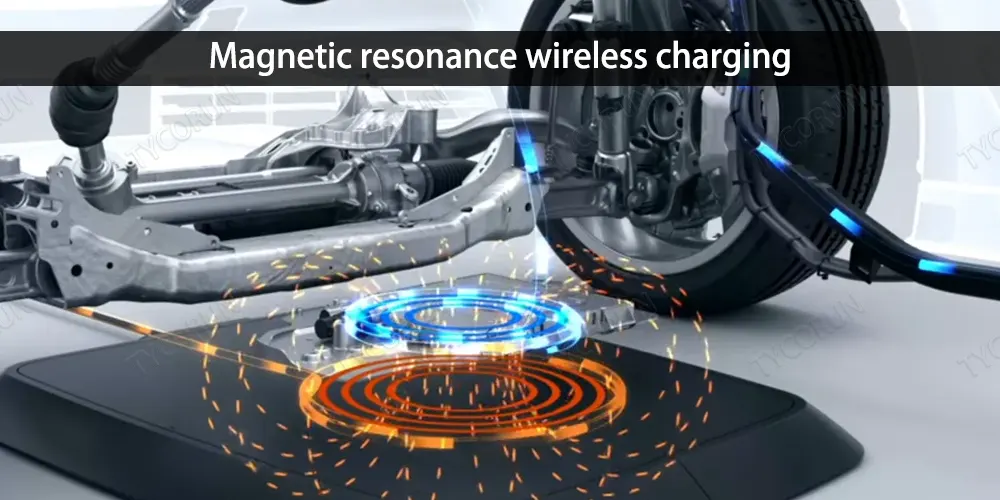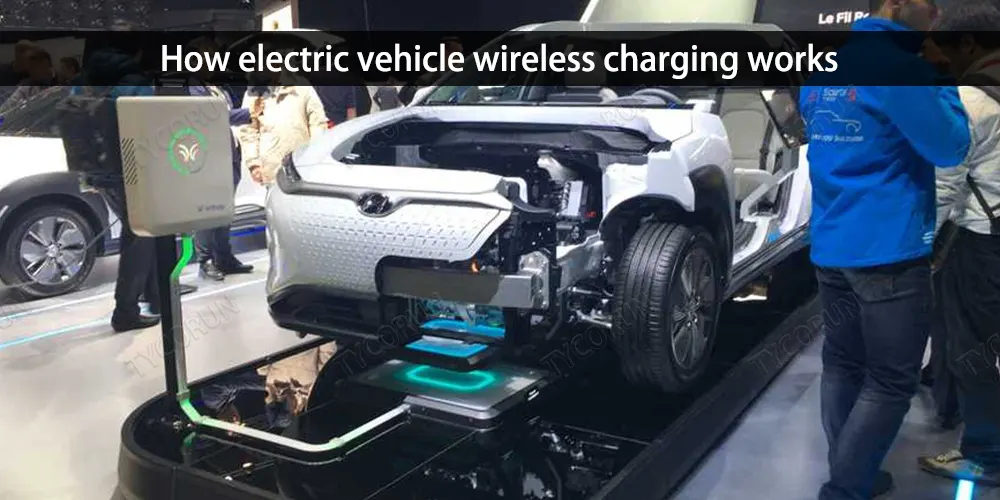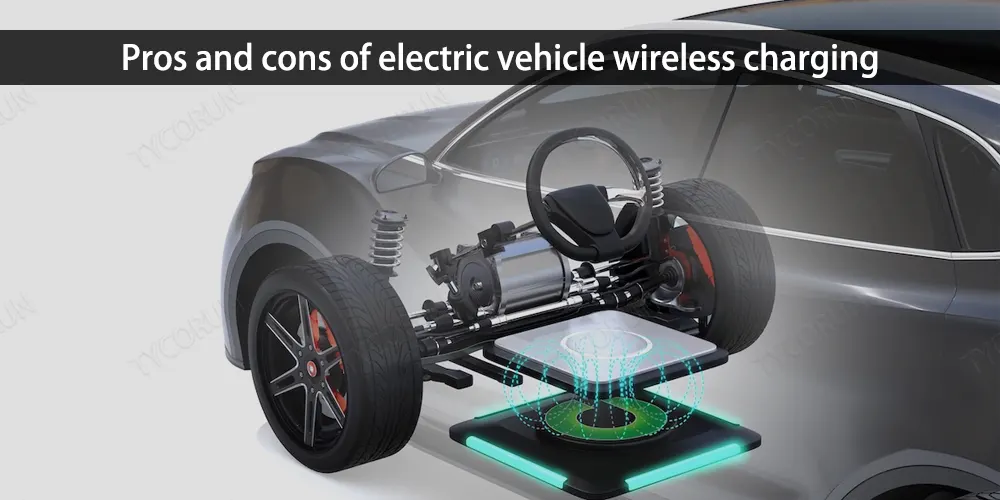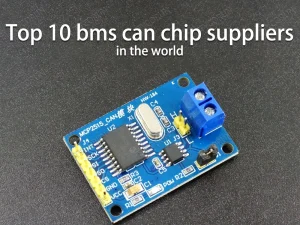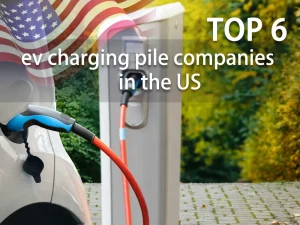Home » lithium ion battery knowledge » Electric vehicle wireless charging – how it works and pros and cons
Electric vehicle wireless charging - how it works and pros and cons
Electric vehicle wireless charging is an electric vehicle power battery recharge method in addition to fast charging, slow charging and battery swapping. It is very similar to the way of slow charging, the main difference is that the transfer way of power has changed.
The on-board charging transformer is placed in the car, and the wireless charging transformer primary and secondary winding are placed outside and inside the car. Electrical energy is transmitted through high-frequency magnetic field coupling. This article will introduce the working principles and advantages and disadvantages of electric vehicle wireless charging.

Three ways of electric vehicle wireless charging
The electric energy transmission of electric vehicle wireless charging mainly includes electromagnetic charging, magnetic resonance charging and radio wave charging.
Electromagnetic charging
The current passes through the coil, creating a magnetic field that induces an induced electromotive force on a nearby coil, generating an electric current. The working frequency level is generally KHz, and the relative output power is large and the efficiency is high. This way of electric vehicle wireless charging requires a specific location to accurately charge, and the charging distance must be controlled between 0-10cm.
Magnetic charging
The frequency of the sending end is the same as that of the receiving end, and the electric energy can be transmitted through the resonance effect to realize long-distance charging. The degree of freedom of the charging position is high, but the charging efficiency is not high.
It’s generally suitable for medium distance transmission, the key is that the power transmission is not affected by non-magnetic obstacles in space, and the advantages are more obvious in static electric vehicle wireless charging. Because of its good stability and high energy conversion efficiency, magnetic resonance charging is currently regarded as the best electric vehicle wireless charging technology.
Radio wave charging
In this way, electrical energy is transmitted through electromagnetic waves. It’s charging in low power, and the charging position is not fixed. The charging time is long and efficiency is low, but transmission distance is longer.
Technical principles of electric vehicle wireless charging
Electric vehicle wireless charging is derived from wireless power delivery technology. The energy is transmitted to the electrical device, which uses the received energy to charge the battery and at the same time for its own operation.
Since the energy is transmitted between the battery charger and the electric device by inductive coupling, the two are not connected by wires, so the charger and the electric device can be installed without exposing conductive contacts.
Electric vehicle wireless charging technologies are divided into the following four types.
Electromagnetic induction
This technology is characterized by short transmission distance and relatively fixed location, but it has high energy efficiency and simple technology. Electromagnetic induction induces current through primary and secondary coils, thereby transferring energy from the transmitting end to the receiving end. This implementation has been vigorously promoted by the Wireless Power Consortium (WPC).
Electromagnetic induction mainly consists of a magnetic core and two coils.
When an alternating voltage is applied to both ends of the primary coil, an alternating magnetic field is generated in the magnetic core, thereby inducing an alternating voltage of the same frequency on the secondary coil, and the electric energy is transmitted from the input circuit to the output circuit.
If the coil at the transmitting end and the coil at the receiving end are placed in two separate devices, when power is input to the coil at the transmitting end, a magnetic field will be generated, and the magnetic field will induce a current to the coil at the receiving end, thus constructing a wireless power transmission system.
When using the electromagnetic induction method, the centers of the transmitting coil and the receiving coil must coincide exactly or lithium battery not charging may occur. Because the magnetic field weakens rapidly with the increase of distance, and the energy is diverged in all directions, if there is a slight misalignment, the transmission efficiency will drop sharply.
Therefore, there are certain limitations in actual use, and there may be a waste of electricity, which is not conducive to large-scale promotion.
Magnetic resonance
Transmitting electrical energy in the form of electromagnetic waves “radio frequency” or “magnetic resonance”, it has high efficiency and very good flexibility. Although the effective transmission distance can reach up to a few meters, due to its scattered energy, the actual effective transmission distance currently used is less than 20cm. And only one-to-one energy transfer is possible.
The principle of the magnetic resonance technology is the same as that of sound. Line up tuning forks that vibrate at the same frequency, and if one makes a sound, the others will resonate and make a sound. Likewise, coils of the same vibration frequency arranged in a magnetic field can be powered from one to the other. Compared with the electromagnetic induction method, the transmission distance can be extended by using resonance.
The magnetic resonance technology is different from the electromagnetic induction technology, and it is not necessary to completely match the positions of the coils. Magnetic resonance is also applicable to two coils with completely matched specifications. One coil generates a magnetic field after being energized, and the other coil resonates and generates current to charge the device.
In addition to the long distance that can be applied, the magnetic resonance method can also charge multiple devices at the same time, and there are no strict restrictions on the location of the devices, so it is flexible to use.
The magnetic resonance technology is composed of an energy sending device and an energy receiving device. When the two devices are adjusted to the same frequency, or resonate at a specific frequency, they can exchange energy with each other.
Coupling
The wireless power supply technology of the coupling method is different from the two technologies mentioned above. The coupling technology uses the induced electric field generated by coupling two sets of asymmetric dipoles in the vertical direction to transmit power, and has a relatively high resistance to horizontal misalignment.
At present, the electric energy can be effectively restrained, and the energy transmission is relatively concentrated. At the same time, it has the characteristics of small size and low heat generation.
However, due to the need to couple two electric boards, more accurate alignment is required in terms of horizontal position and relative angle. At present, the effective transmission distance has reached 30cm. At the same time, this technology has a strong ability to resist magnetic field interference, and can easily penetrate other equipment such as metals, so it has strong applicability.
The characteristics of the coupling technology are roughly as follows:
1) Free position can be realized when charging;
2) The electrode can be made very thin, and there are no strict requirements on the material and shape;
3) The temperature of the electrode part will not rise. Therefore, not only convenience can be provided, but also system cost can be reduced.
Radio-frequency microwave
The electrical energy is transmitted wirelessly in the form of microwaves and transmitted to the receiving antenna at the far end. Although this method is energy inefficient, it is convenient to use.
Radio waves are similar to the ore radios used in the early days. They are mainly composed of microwave transmitting devices and microwave receiving devices. The receiving circuit can capture the radio wave energy bounced off the wall, and maintain a stable DC voltage while making adjustments with the load.
How electric vehicle wireless charging works
The working principle of wireless charging for electric vehicles is to transmit electric energy outward through wireless transmission, and convert the energy received at the receiving end into electric energy, thereby realizing wireless transmission of electric energy, and storing electric energy in the battery for charging.
The core of wireless charging for electric vehicles lies in the coupling coil. The transmitting coil and receiving coil are coupled for energy transfer. The coil transmits power wirelessly. The transmitting coil end is composed of a primary power conversion circuit and a compensation circuit. The conversion circuit is composed, and the energy storage device is charged after the conversion is completed.
Electric vehicle wireless charging transmits electric energy to the ground charging equipment through the power grid, and the ground charging equipment and the vehicle-end charging equipment are coupled through coils to transmit electric energy to achieve electric vehicle wireless charging.
The alternating current of the power grid is filtered, rectified, PFC, and inverter circuit passes through the coupling coil, rectified and DCDC current boosted in the electric vehicle wireless charging device, and converted into the energy of the power battery.
The vehicle-end controller has functions such as communication, detection, and positioning, and the ground-end equipment controller has functions such as positioning, foreign object detection, and living object detection. Signals are transmitted between the controllers through wifi or bluetooth, and the car-end controller controls and displays the charging process with VCU, BMS, and instrumentation.
After the ground terminal and the vehicle terminal are connected by wifi, the identification of the vehicle and the wireless charging device is carried out, and the charging handshake connection is completed.
Current platform and other information, and start foreign object, positioning, living body detection, confirm the environment before charging, complete the charging start state, carry out charging transmission, and stop charging when the charging cut-off condition and fault condition are reached.
At present, the power of wireless charging of electric vehicles is divided into 3.7kW, 7.4kW, 11kW, and 22kW according to different power levels, and the system efficiency can reach more than 90% within the working range.
Pros and cons of electric vehicle wireless charging
Pros:
With the rapid development of driverless technology, wireless charging of electric vehicles has become a necessity. The integration of electric vehicle wireless charging technology and L3 autonomous driving technology.
When the vehicle is parked at the entrance of the parking lot, the automatic driving mode is turned on to find a parking space, and after finding a parking space, the electric vehicle wireless charging is realized through remote control, and after being fully charged, waiting for the driver to call.
Electric vehicle wireless charging is simple and convenient, that is, stop and charge without no manual operation or any cable dragging, which greatly improves the user experience and offers safe, reliable and convenient experience.
Cons:
- High cost, higher than the traditional DC pile;
- Electrical energy loss is higher than the charging pile;
- Uncertain whether electromagnetic radiation is harmful;
- Low power, it’s a form of slow charging.
Hardware design of electric vehicle wireless charging technology
The coupling coil divides the wireless charging system into GA (Ground Antenna) and VA (Vehicle Antenna), with no electrical physical connection between the two parts. Both have independent digital control circuits, including wireless data communication units, which are called ground and vehicle communication units respectively.
The ground and vehicle communication units exchange data through Wi-Fi, Bluetooth and other wireless communications. Both the ground and vehicle parts include single-phase full-bridge inverter/PWM rectification circuits.
When the power battery is charging, the single-phase full-bridge inverter/PWM rectifier circuit of the ground part can work in the inverter state by using “phase-shift control”, while the single-phase full-bridge inverter/PWM rectifier circuit of the vehicle part works in the rectification state. When the power battery is discharged, the opposite is true.

